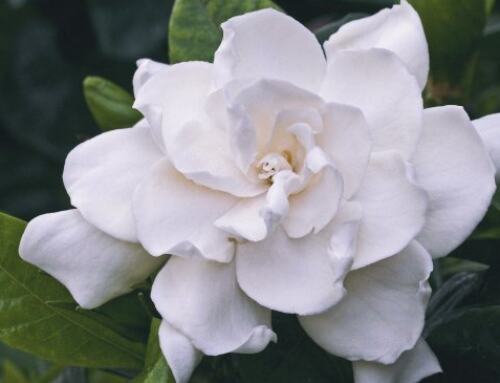Echinacea Uses + Homemade Echinacea Extract
Whether you’ve heard of echinacea or not, it’s an herbal flower remedy that can do wonders for the immune system, brain and skin. So how do you get these amazing echinacea benefits? There is no shortage of echinacea uses you can try to get these amazing health-promoting powers.
So what is echinacea, and what are its uses? Depending on the context, echinacea is an herbal remedy, a wildflower or a garden flower. Most broadly, echinacea refers to a family of perennial flowers related to daisies and asters. In this article I mostly discuss the types of echinacea that are used as herbs, the uses, and a little info on growing echinacea and harvesting it to use as an herbal remedy — either as echinacea tea, fresh-pressed echinacea juice or echinacea extract (also sold as a tincture or drops).
The type, or species, of echinacea that is most commonly used as an herb is the purple coneflower (scientifically known as Echinacea purpurea). It is native to the eastern and central U.S., from Texas to New York. The wild version sports huge purply-pink (or occasionally white) single, daisy-like flowers with prominent centers. The pale coneflower (E. pallida), which sports flowers with swept-back petals, and blacksamson coneflower (E. augustifolia) are also native to the U.S. but are rarer and less commonly used in herbal remedies. In recent years, plant breeders have introduced many newly cultivated varieties and hybrids of purple coneflower, with not only purple or white flowers, but also pink, yellow and orange petals and both single and double flowers.
There are many traditional echinacea uses, but the strongest scientific evidence available currently supports echinacea use (as extract or tea) as a way to help slow the development and reduce the intensity and duration of upper respiratory viral infections, such as the common cold and influenza (flu). Of the many bioactive chemicals echinacea contains, some seem to make it harder for viral particles to get inside human cells to reproduce, which may explain the efficacy of echinacea against viral infections — making it one of the best antiviral herbs around.
Homemade Echinacea Extract
While echinacea extract is readily available in stores, it isn’t cheap when you take it frequently, and one can never be quite sure of the quality or the possible contamination of herbal extracts, especially the less expensive brands. Luckily, growing echinacea is easy, and making your own extract is quite simple. All you need is some vodka and either dried, commercial echinacea herb or your own plants, which I describe below in more detail.
Harvesting echinacea to make your own extract or tea
Every part of the echinacea plant — leaves, flowers and roots — contains a range of useful bioactive compounds. Which compounds and how much of each varies from part to part of the plant, from season to season and from species to species. Some of the beneficial compounds are more soluble in water, others in alcohol. (All this variation may help explain why the results of scientific studies looking at echinacea use are not consistent, as it is rarely possible to tell which part of the plant was used, when it was harvested and even if the species used was correctly identified.)
The best time to harvest echinacea roots is in the fall when the weather cools and the foliage begins to turn yellow. Carefully dig up the plant, shake or wash off most of the soil, and separate the plant into sections. Replant a portion of roots with dormant buds at the top to grow again next year. Collect all the rest of the roots, wash off all the soil and allow to dry for a few hours. Use these roots fresh or chop them coarsely and dry them on screens in a dry, shady area or on very low heat in the oven until dry enough to snap for use in teas or making extract later.
Harvest young leaves in the spring, ideally picking them in the morning as soon as the dew is dry. Harvest flower buds and freshly opened flowers in summer. Use right away or dry for later use.
Top Echinacea Uses
1. Take echinacea to help prevent catching a cold
A review of 82 studies published in 2018 in Evidence-Based Complementary and Alternative Medicine concluded that echinacea use — 2,400 milligrams of extract/day — for four months may help keep you from catching a cold or at least reduce the severity and duration of symptoms of you do catch one. (1)
2. Take echinacea at the first sign of a cold
A meta analysis of studies published in 2015 in the Journal of the American Medical Association concluded that echinacea use, if started when the first symptoms appear, may help modestly reduce the duration and severity of the common cold. (2) Further research supports this, showing preventing and treating a cold is one of the most notable echinacea uses. It’s been shown to help combat viral colds and even seems to show more powerful effects in combating illness once cold symptoms begin. (3, 4)
3. Take echinacea to help avoid the flu
A cell study published in 2009 showed that various types of flu viruses, including potentially lethal bird flu and swine flu, were unable to infect cultured human cells that had been exposed to echinacea extract. While lab study findings do not always prove true in living humans, these results — combined with the results of human studies showing the benefits of echinacea uses in humans — suggest that echinacea use may be worth trying right away if you’ve been exposed to someone with flu or it is “going around” in your area. (5)
4. Take echinacea at the first sign of the flu
A study out of Europe published in 2015 found that echinacea was as effective as the prescription medication Oseltamivir for lessening the severity and duration of flu symptoms as well as preventing adverse effects when started at the first sign of infection. (6)
[…]







